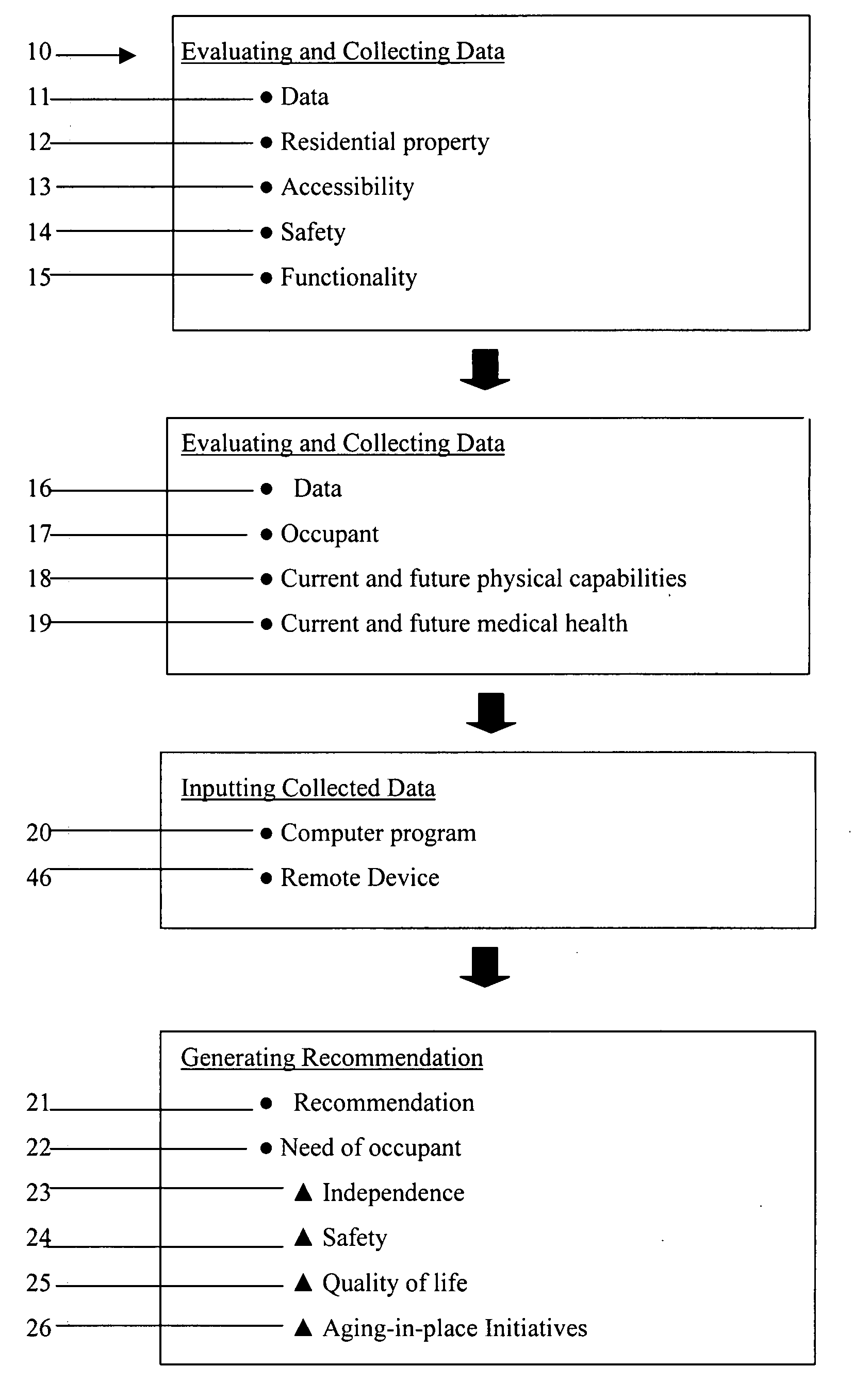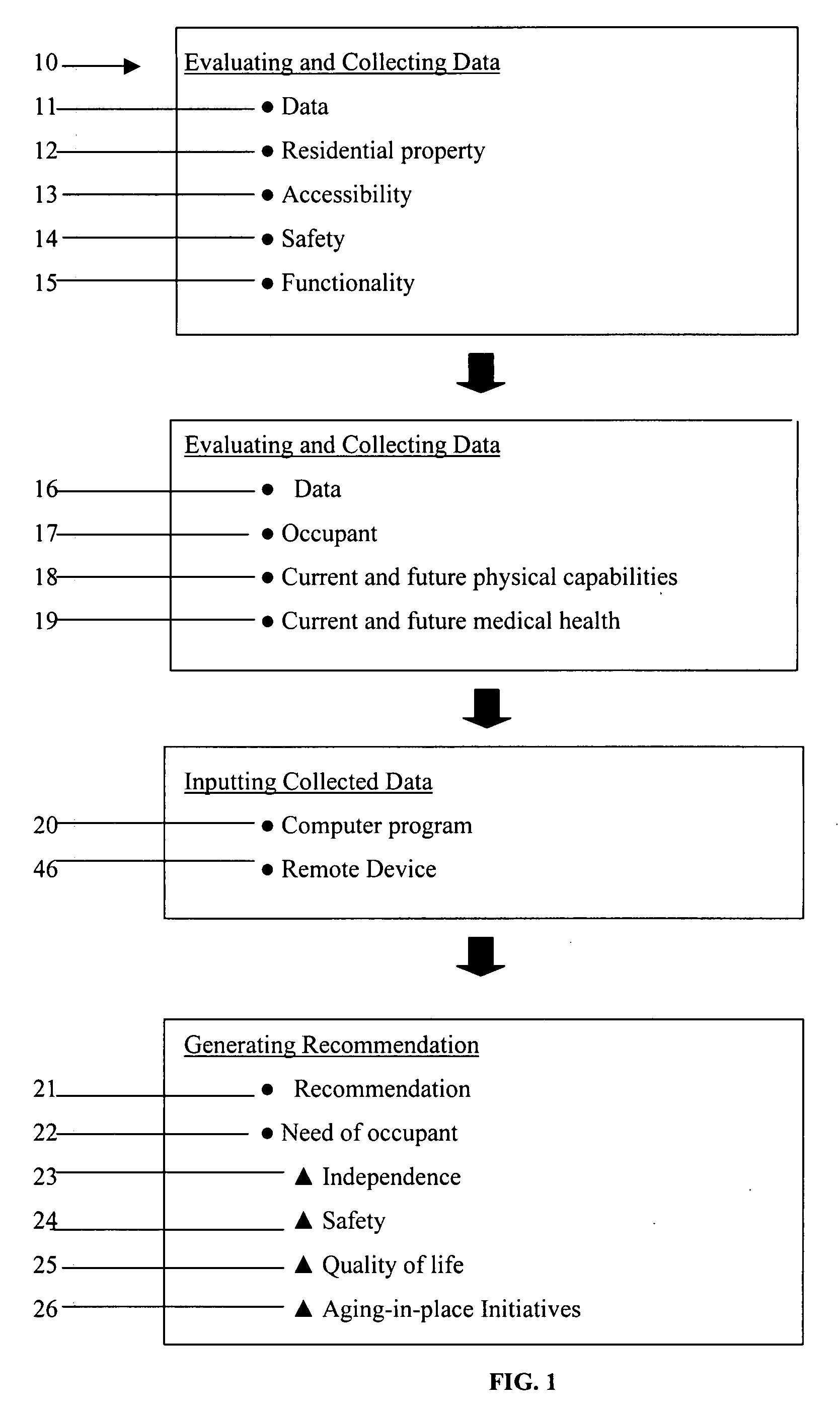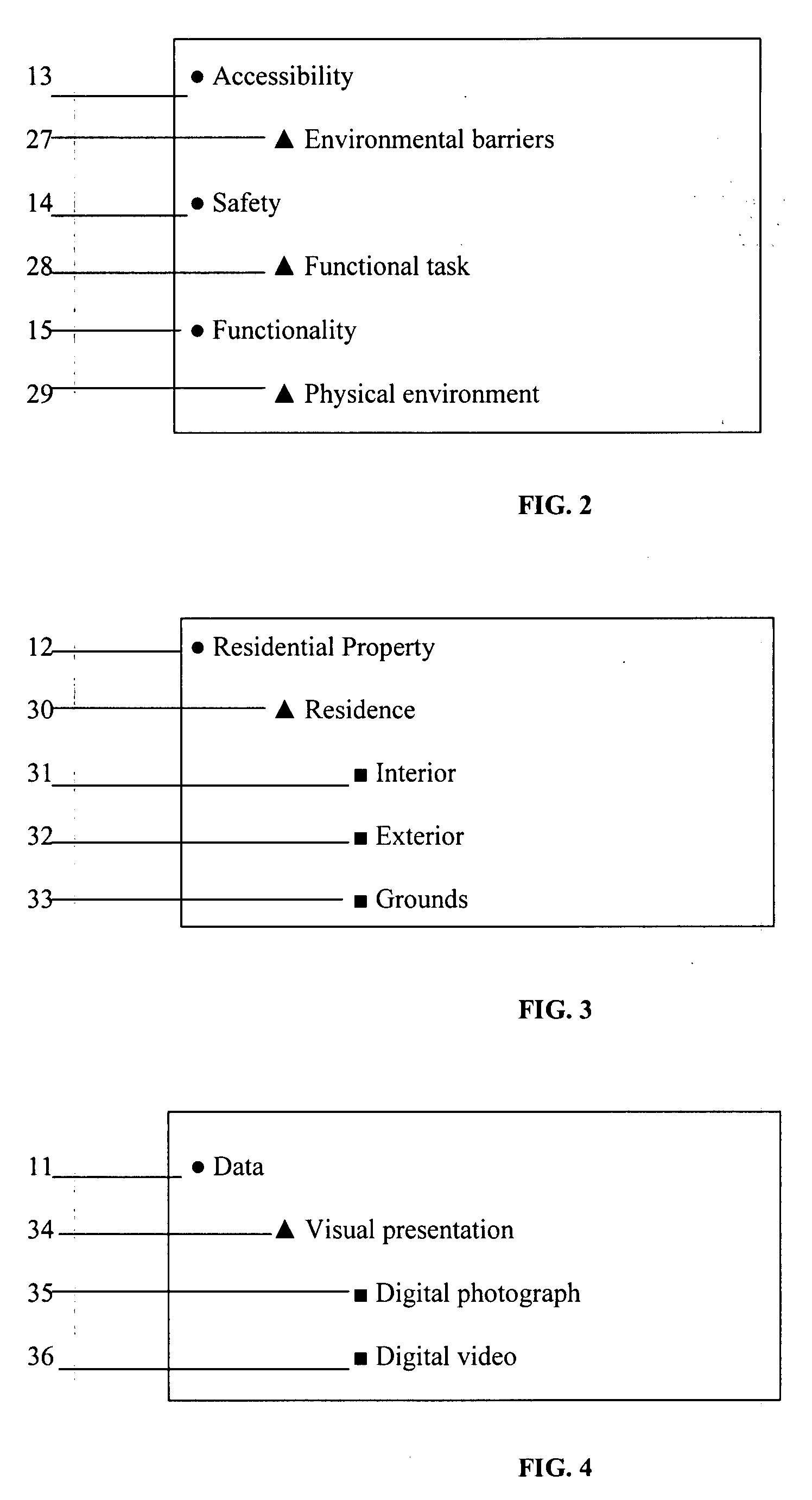Computer-based method of recommending modifications to residential or commercial property
a computer-based, residential or commercial technology, applied in computing, instruments, data processing applications, etc., can solve the problems of seniors' difficulty in getting the help they need to live in their own homes, inability to meet the demand for innovation to assist seniors, and lack of accessible housing for those of retirement age. , to achieve the effect of convenient us
- Summary
- Abstract
- Description
- Claims
- Application Information
AI Technical Summary
Benefits of technology
Problems solved by technology
Method used
Image
Examples
example 1
[0157]An assessment is requested at the home of a couple who have a three-year old child with cerebral palsy. The wife is expecting a second child. The only care givers for the child are the parents. The parents anticipate that the mother will need assistance with the three-year old who is wheelchair bound and unable to perform any self-care skills (e.g., bathing, toilet functions, dressing, etc.) without assistance. Bathing the three-year old in a tub, even without the mother's pregnancy, is challenging and becoming unsafe for both the child and the care giver. Using method 10 and computer program 20, the clinician will not only assess the functional abilities of the disabled child but the needs of the care givers as they age. The child's physical and cognitive abilities will be evaluated and his safety as the child moves around the home and becomes more mobile in his wheelchair. Factors considered are: Will the child be able to independently propel himself through the home? Will t...
example 2
[0158]If a builder is called in for an assessment of a person with Multiple Sclerosis (MS), the builder could easily overlook a deficit that would not ordinarily be considered. For example, a person with MS has obvious physical limitations that will progressively worsen. Often overlooked are flare-ups of optic neuritis that causes vision difficulties. The vision problems will result in self-care difficulties, as for example, medication administration (oral and injectable medications), reading, and cooking (diminished ability to see dials). The vision disturbances may subside for a time once inflammation of the optic nerve reduces, but the flare-ups nonetheless must be addressed for safety reasons. Computer program 20 is pre-programmed with recommendations for those suffering from MS. By inputting that the person being assessed has MS, the builder would be given a list of modifications for the home specific to persons with MS, with such modifications being a phased design addressing ...
PUM
 Login to View More
Login to View More Abstract
Description
Claims
Application Information
 Login to View More
Login to View More - R&D
- Intellectual Property
- Life Sciences
- Materials
- Tech Scout
- Unparalleled Data Quality
- Higher Quality Content
- 60% Fewer Hallucinations
Browse by: Latest US Patents, China's latest patents, Technical Efficacy Thesaurus, Application Domain, Technology Topic, Popular Technical Reports.
© 2025 PatSnap. All rights reserved.Legal|Privacy policy|Modern Slavery Act Transparency Statement|Sitemap|About US| Contact US: help@patsnap.com



